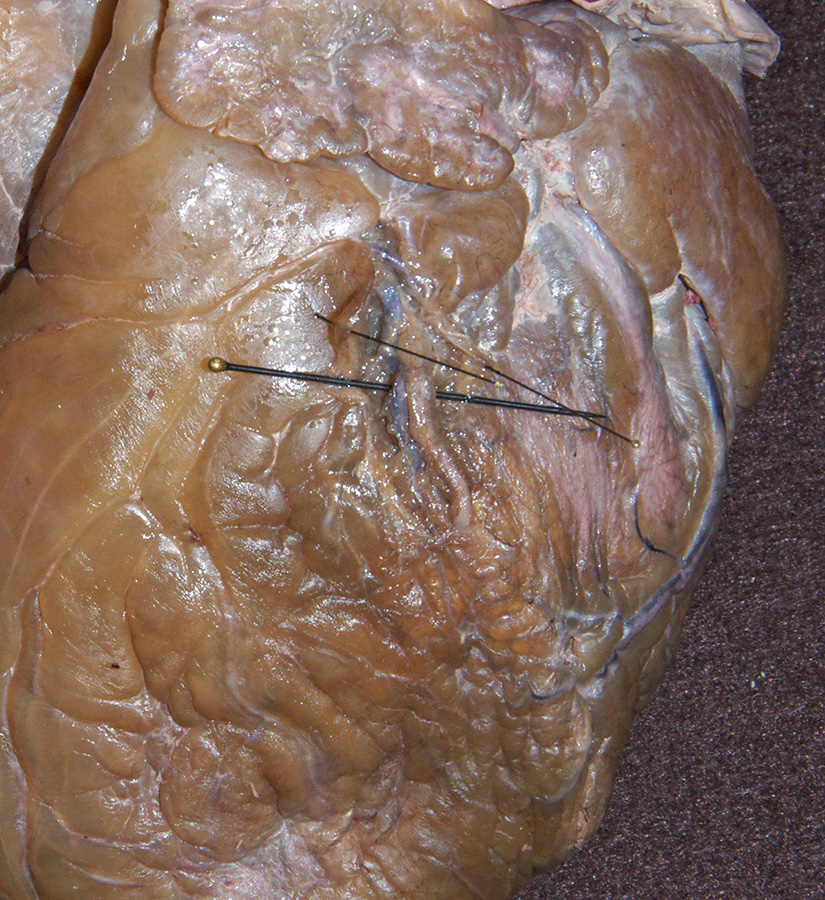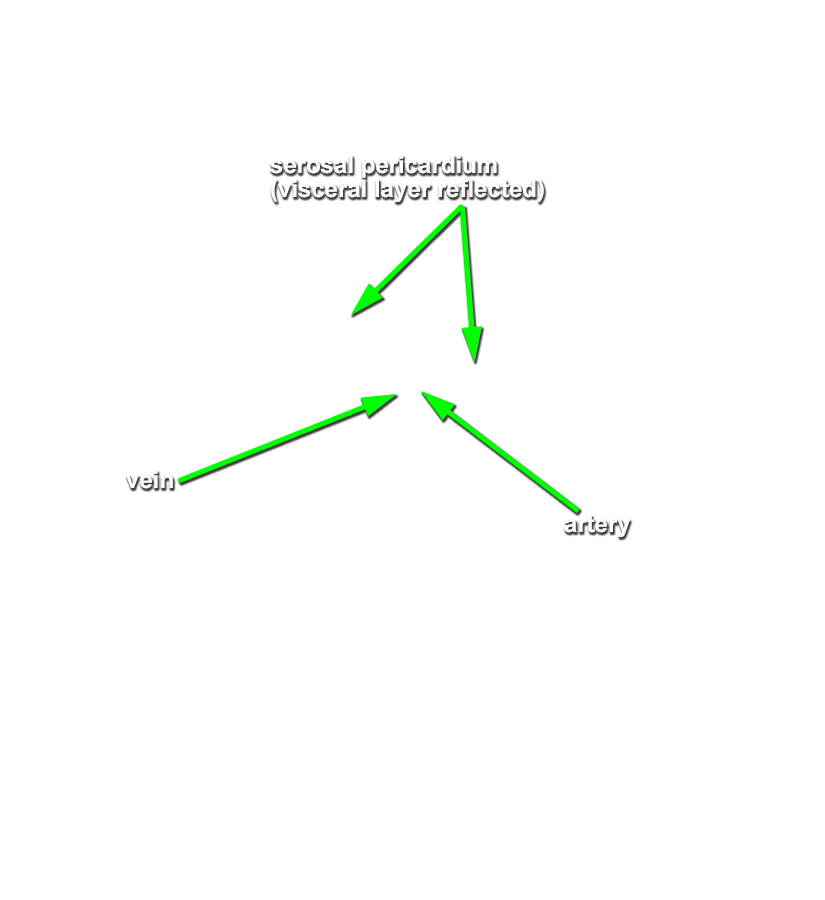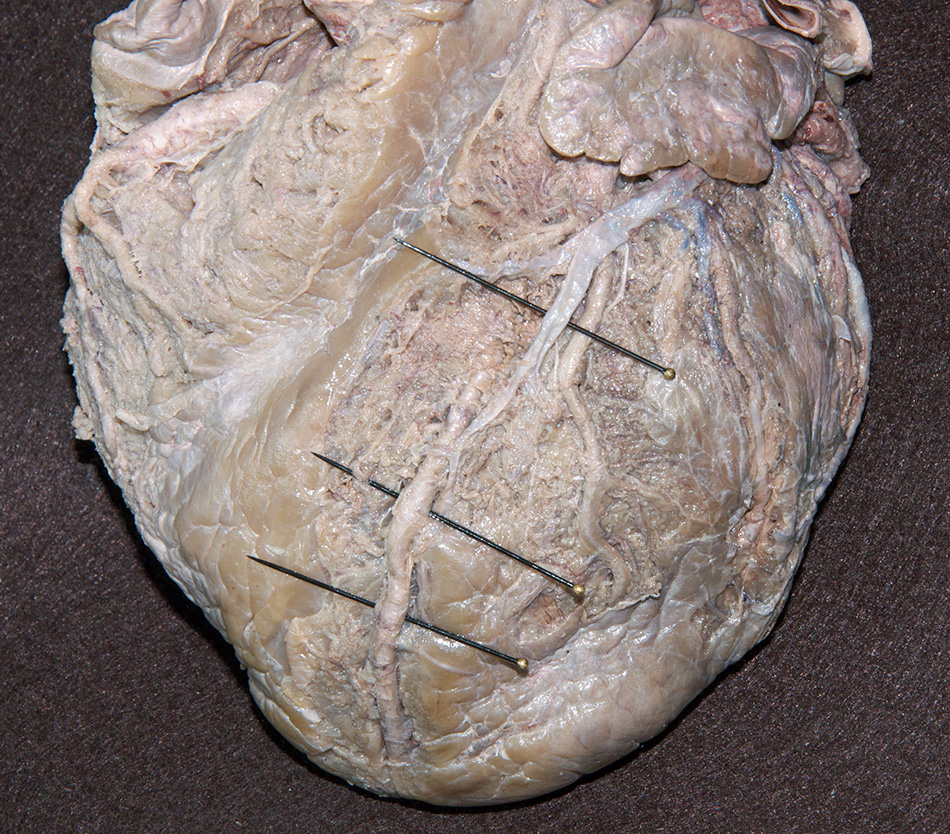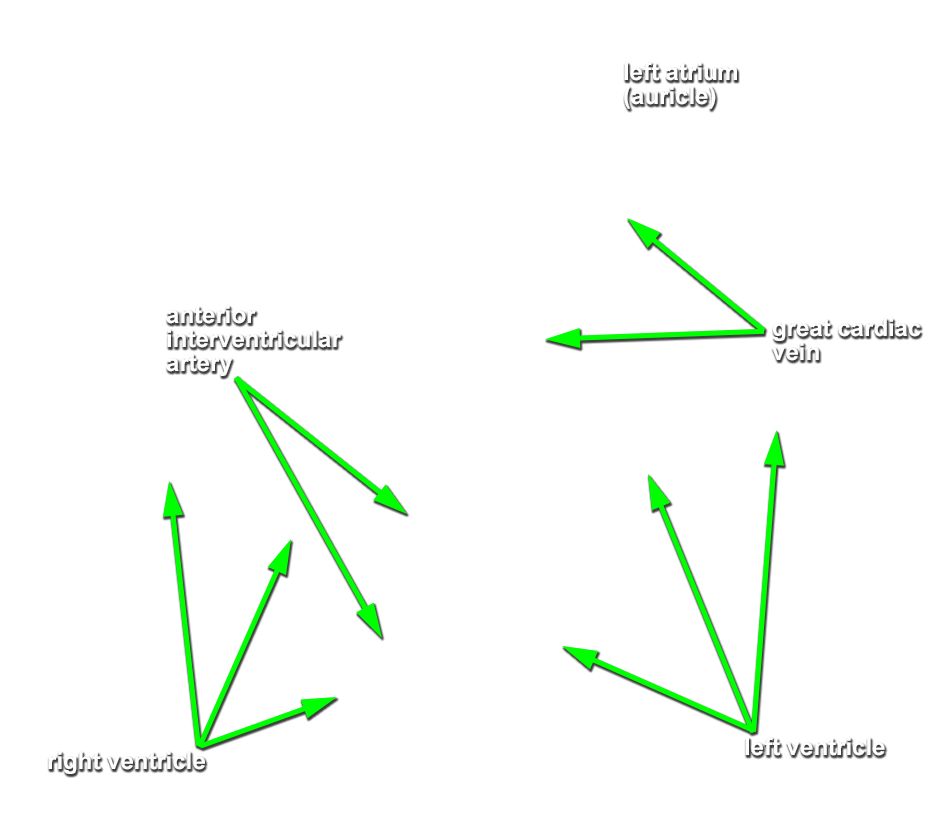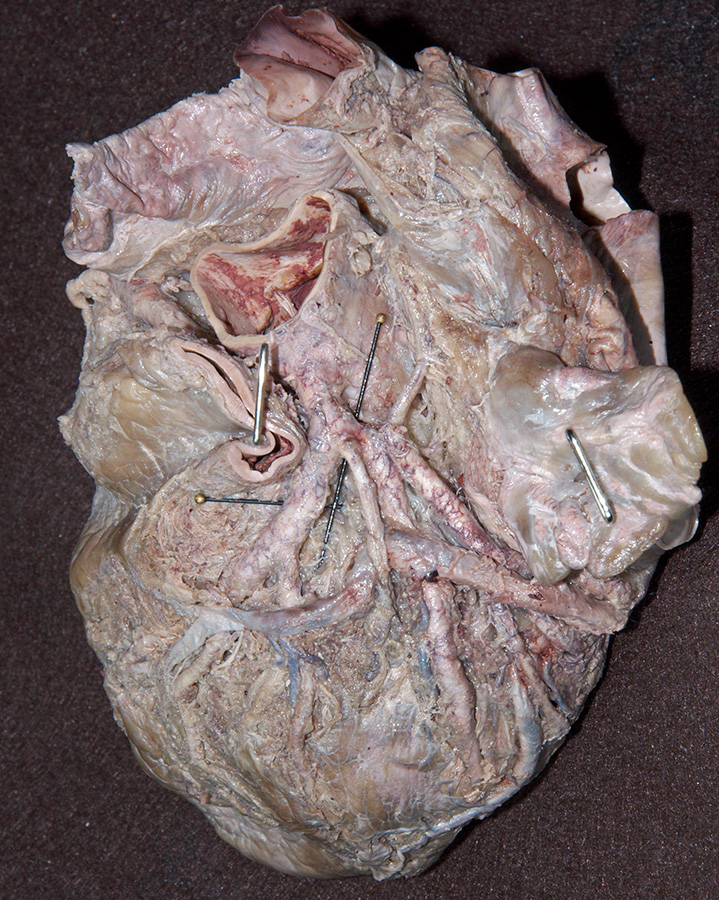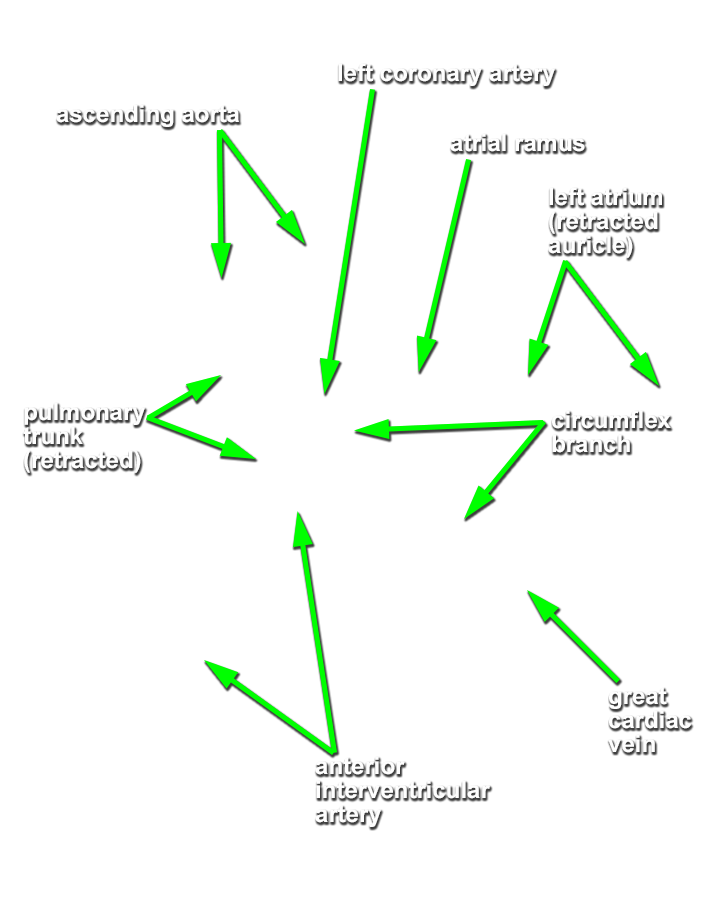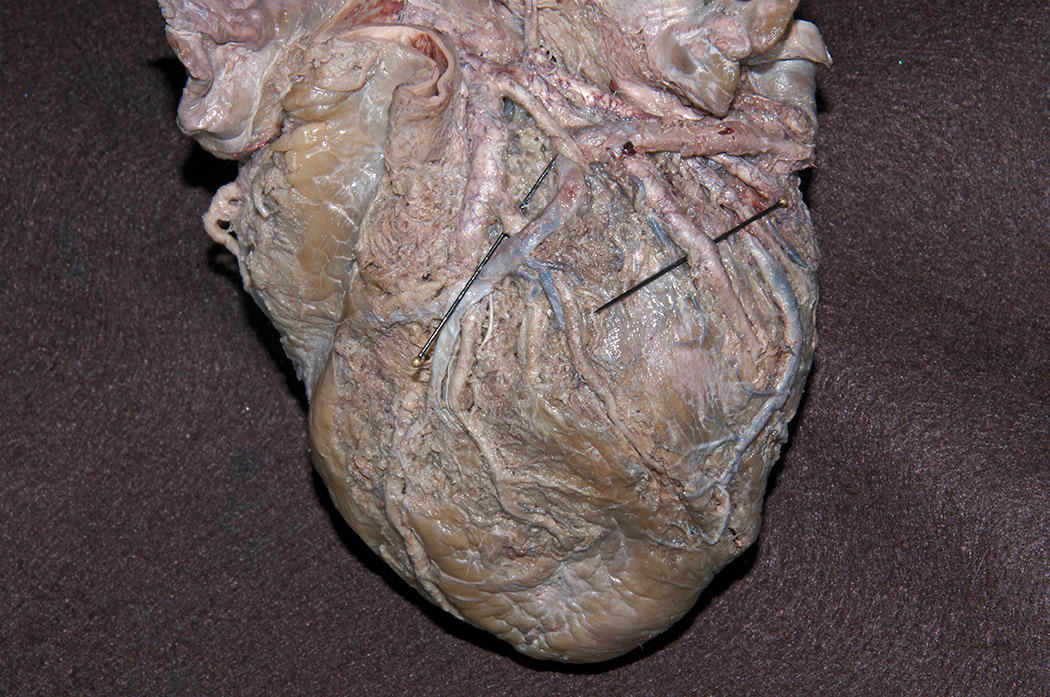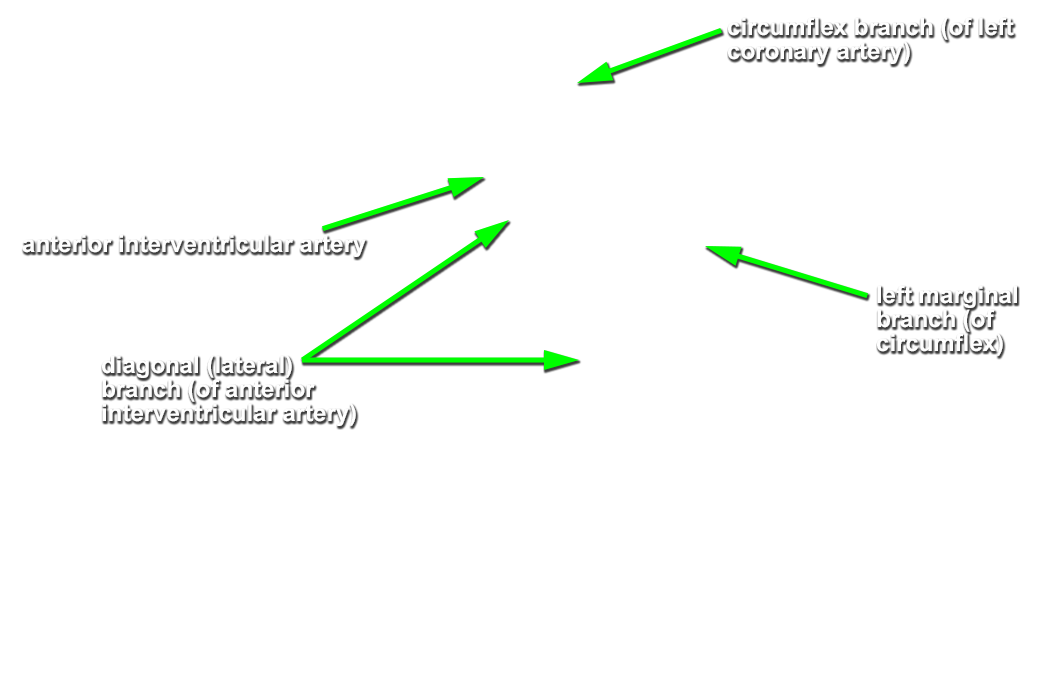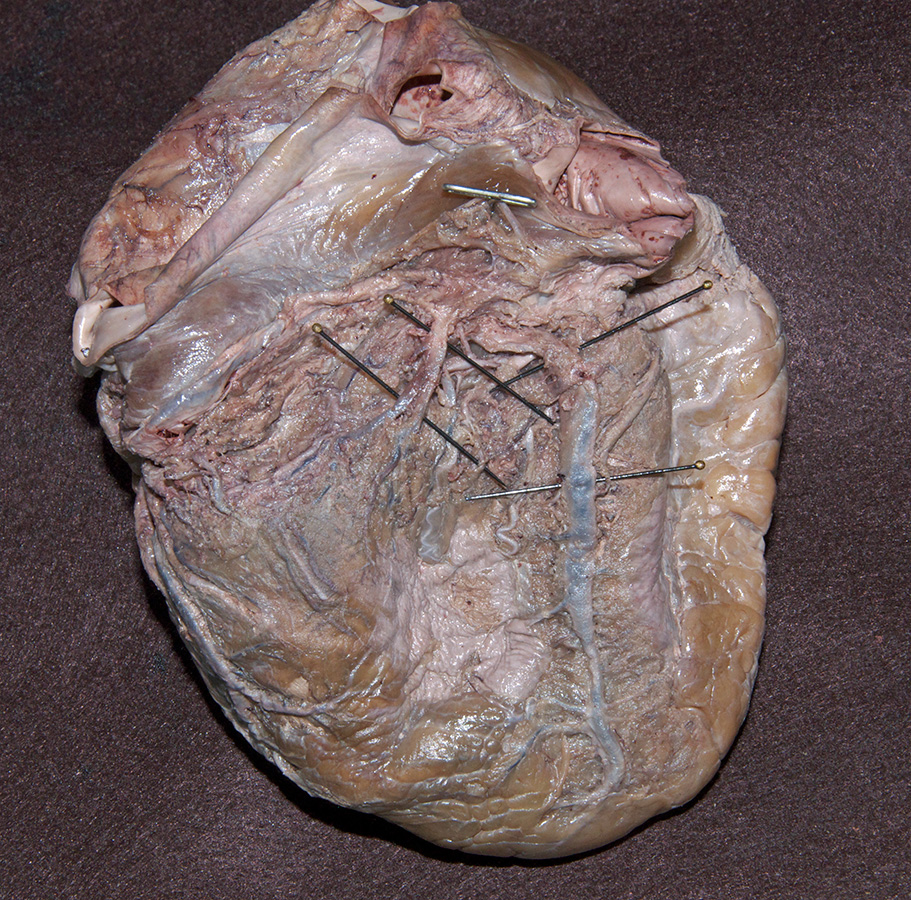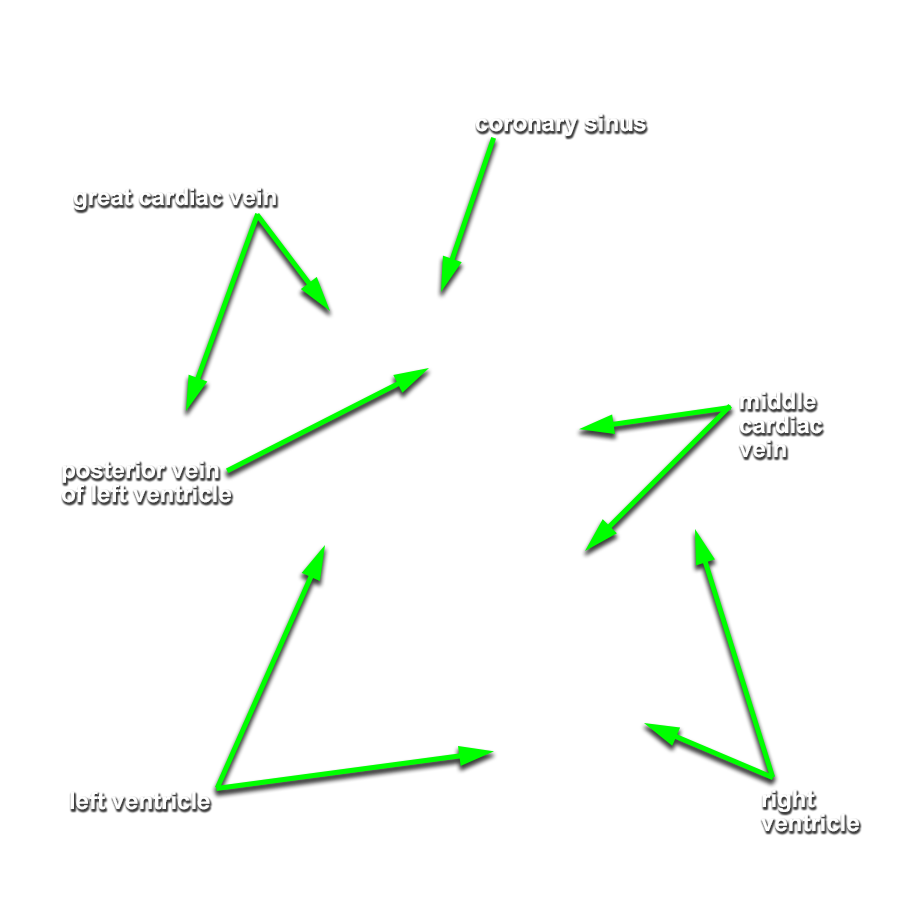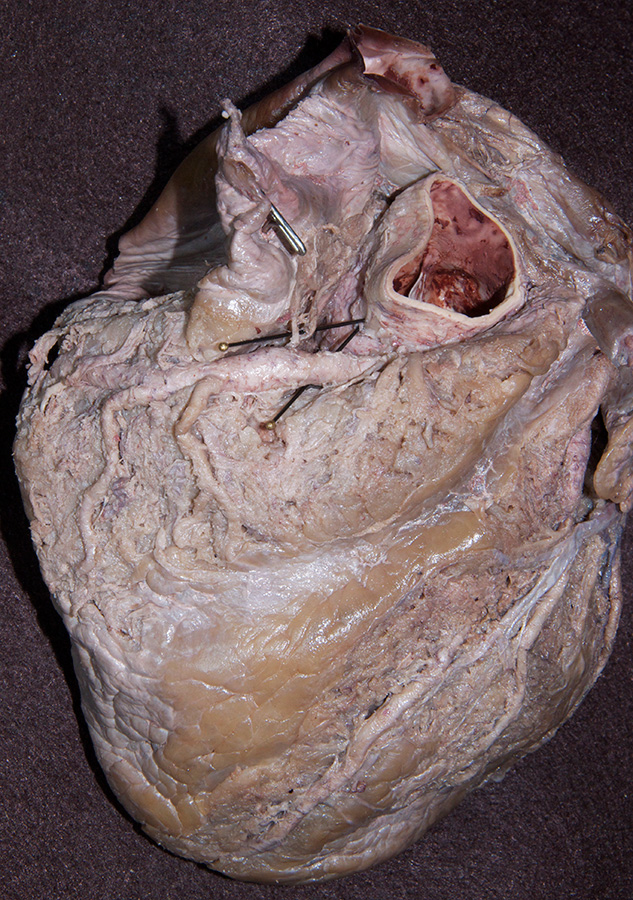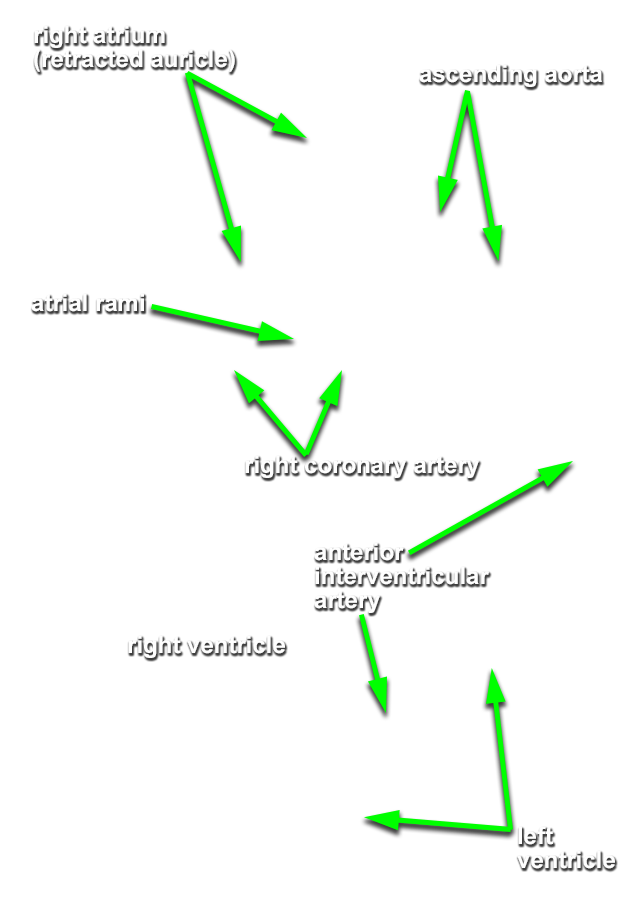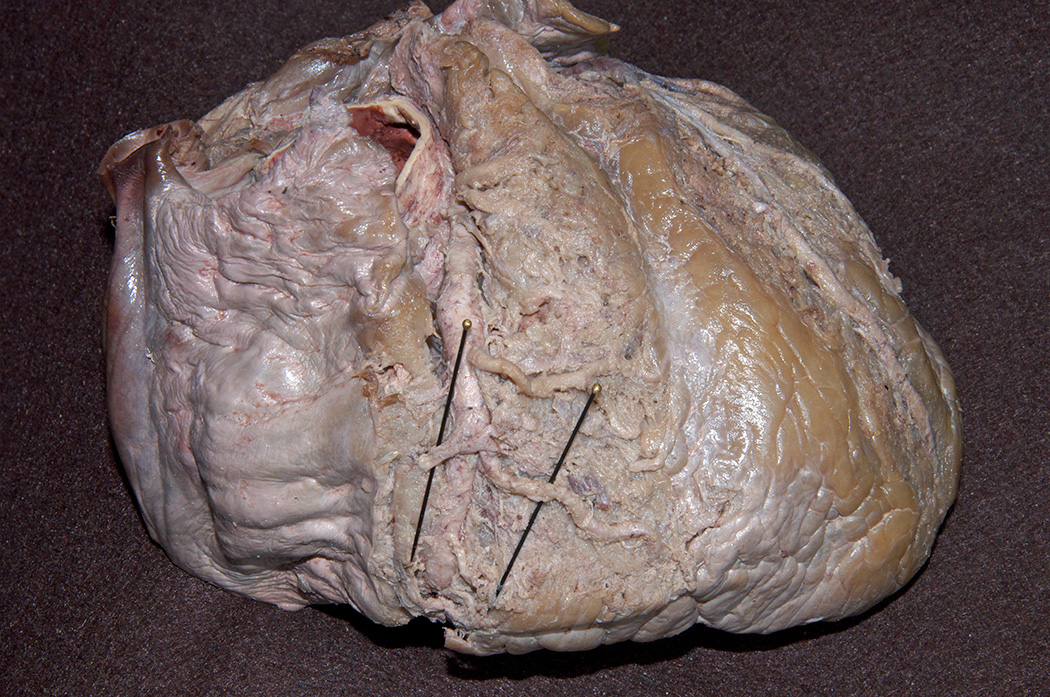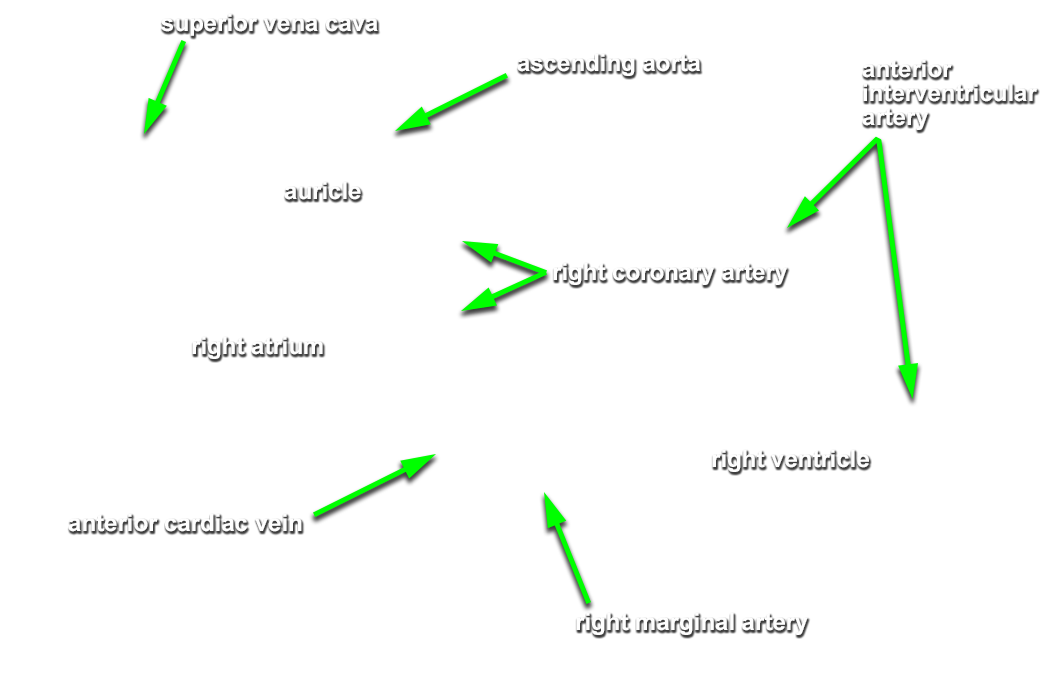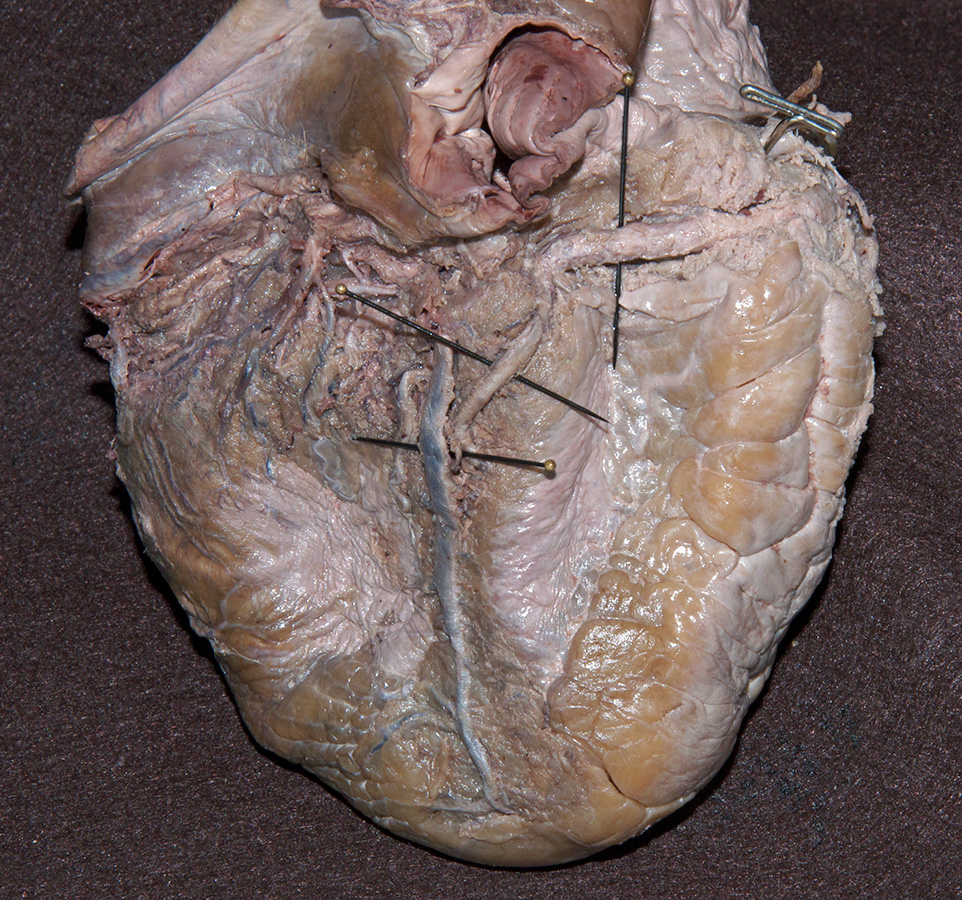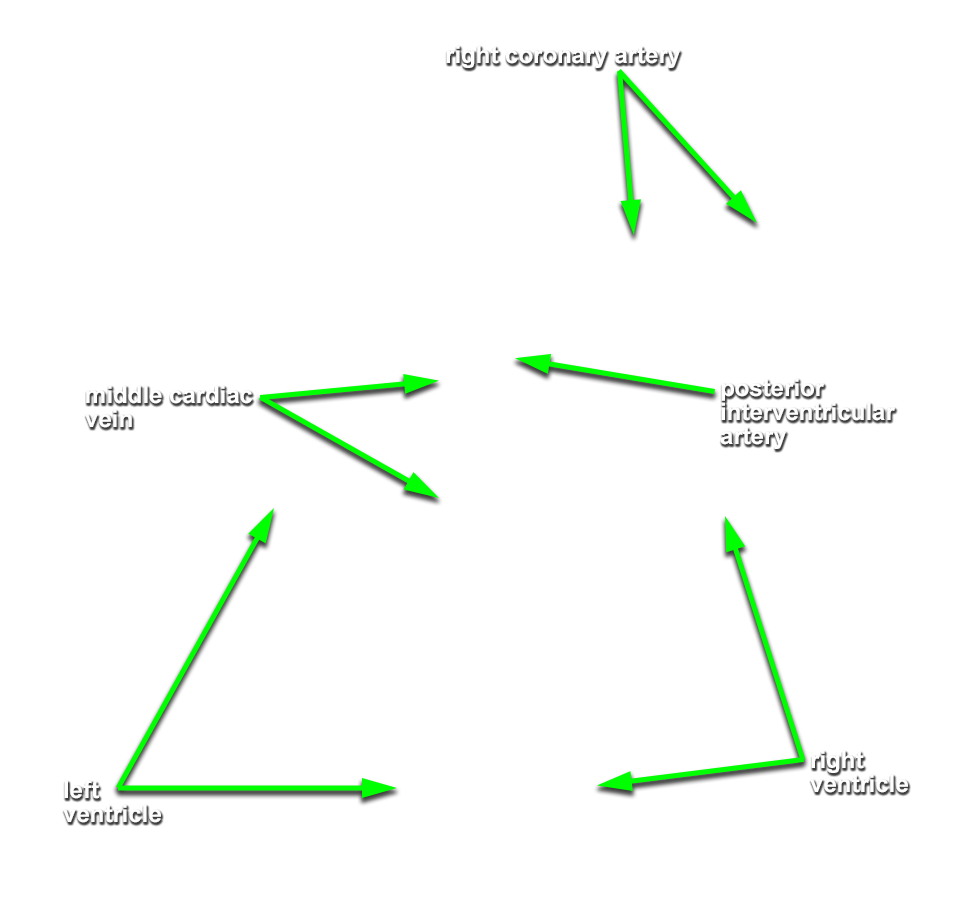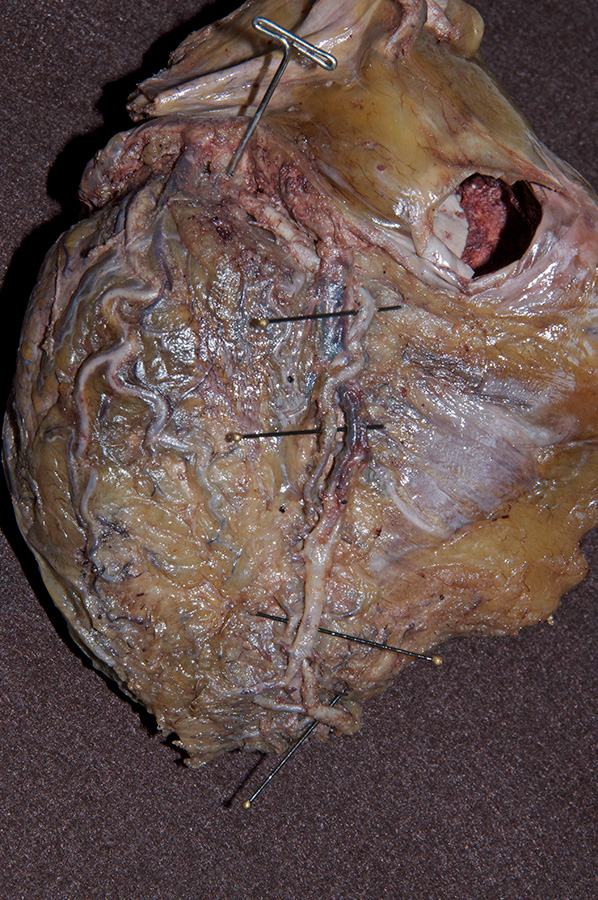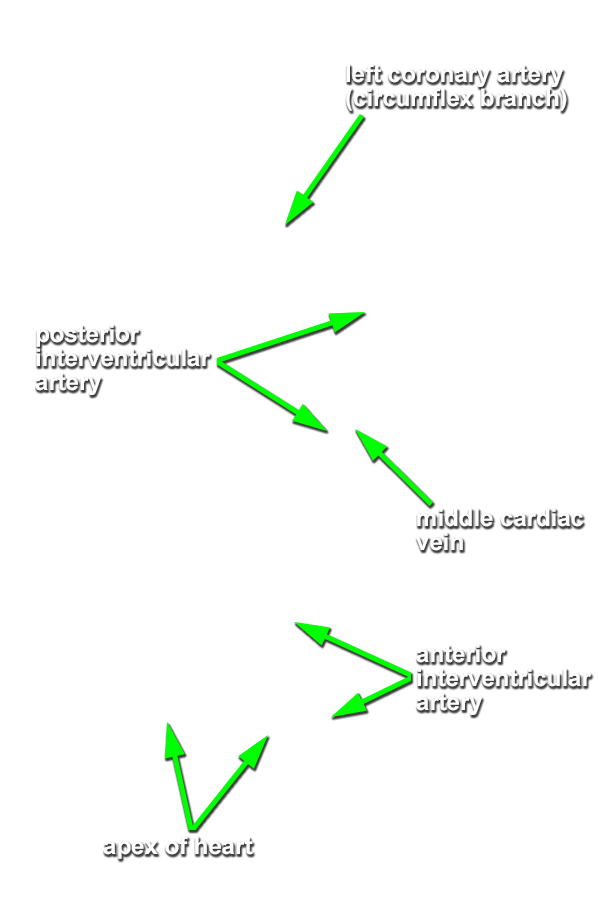Identify the coronary arteries and cardiac veins on the surface of the heart. (G 3.43;N 215;Gl 9.16)
- Identify and clean (blunt dissect along the vessels while removing subepicardial fat) the anterior interventricular artery and great cardiac vein. Trace these vessels toward the coronary sulcus. Identify the left coronary artery arising from the ascending aorta. Identify the circumflex branch of the left coronary artery. This is the continuation of the left coronary artery past the origin of the anterior interventricular artery. Carefully trace the artery and vein to the posterior aspect of the heart. Identify the left marginal branch of the circumflex artery. Attempt to identify the left posterior ventricular vein. (G 3.49;N 215;Gl 9.16) This is the point where the coronary sinus begins.
- Carefully blunt dissect in the coronary sulcus adjacent to the right auricle. Identify the right coronary artery. If you are careful, you may be able to dissect one or more anterior cardiac veins crossing the right coronary artery where they drain directly into the right atrium. Attempt to identify a few delicate atrial rami arising from the right coronary artery. Continue tracing the right coronary artery to the posterior aspect of the heart. Identify the right marginal branch and the posterior interventricular artery. You may be able to identify the small cardiac vein traveling with the right coronary artery. Identify and clean the middle cardiac vein where it drains into the coronary sinus. It is not unusual to observe variation in the branching patterns of the coronary arteries including the posterior interventricular artery arising from the circumflex branch of the left coronary artery.
